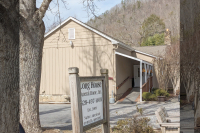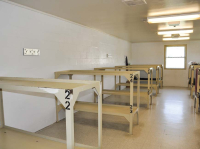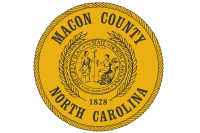An America divided by class
 For the past 80 years more and more Americans have linked themselves economically to the machinations of the federal government. Having come to depend so heavily on government regulations and monetary entitlements, and by this dependence having subsequently given so much power to Washington, we now rightly credit the government with having the power to bring boom or bust, to change a bad economy to a good one and vice versa, to alleviate the suffering of those caught up in a depression or recession.
For the past 80 years more and more Americans have linked themselves economically to the machinations of the federal government. Having come to depend so heavily on government regulations and monetary entitlements, and by this dependence having subsequently given so much power to Washington, we now rightly credit the government with having the power to bring boom or bust, to change a bad economy to a good one and vice versa, to alleviate the suffering of those caught up in a depression or recession.
Our tendency to view the federal government as a sow with millions of tits has repercussions which are daily becoming more evident. We now have a citizenry hooked on tax breaks for individuals and corporations, housing loans, educational loans, kickbacks and grants for entrepreneurs, unemployment benefits, disability payments, single-mother support, food stamps, and a host of other federal programs. Ironically, these entitlement programs — some for the wealthy, some for the poor — are eating the very economy which produced them.
According to Charles Murray in Coming Apart: The State of White America, 1960-2010 (ISBN 978-0-307-45342-6, $27), this propensity to look to the government to solve our problems, along with a vast sea change in values and culture, has led us to a place “in which America is coming apart at the seams — not the seams of race or ethnicity, but of class.”
Using anecdotal evidence as well as statistics from the last 50 years — Coming Apart offers dozens of graphs and charts — Murray demonstrates that America is now divided less by race than by education, income, and values. To make his case, he creates two fictional towns — Belmont, populated by upper-class and upper-middle class citizens, and Fishtown, a blue-collar neighborhood whose former virtues of hard work, family, and volunteerism have either vanished or become severely diminished.
In his descriptions of Fishtown, Murray offers the depressing scenario, based on real statistics, of a community in decline. Few of the inhabitants in Fishtown graduate from college. The majority of households with children are headed up by single mothers. Far fewer men work full-time jobs now than in 1960. Church attendance, volunteering for local charities, and a trust in one’s neighbor have all precipitously declined while prison recidivism, food stamp usage, and crime have sky-rocketed.
The wealthier citizens of Belmont have also seen great changes in the last 50 years. They earn more money and own more things than did their fathers or grandfathers; they are better educated; they are far more likely to marry and remain married; the majority of their children live in two-parent households. Many of the inhabitants of Belmont spend time in volunteer activities, and many of them regularly attend some form of religious worship.
Related Items
During his examination of this contrast between Fishtown and Belmont, between America‘s working class and what Murray calls the “new upper class,” Murray again and again points to the dangers inherent in the divisions. He fears that American civic culture, which was once marked both by individual responsibility and community life, including “vibrant civic engagement in solving local problems,” is unraveling in Fishtown. His evidence here is strong and reveals the hard, heavy impact of government programs on family life and neighborliness. (In the 1965 Moynihan Report, Daniel Patrick Moynihan, a Democrat and later a liberal senator, correctly predicted the collapse of the black family under the new system of government welfare. This same phenomenon is at work in Murray‘s Fishtown today).
Murray also sees a growing division between the new upper class and the denizens of Fishtown. He aptly demonstrates that the upper class is different than it was 50 years ago. In 1960, many who made up the upper and upper middle classes had grown up working on farms, had served in the military, had left school early to help support their families. In contrast, many of today’s elite attend private schools, enroll in the better colleges and graduate schools, and share the same values, including a general contempt for those lesser beings who enjoy Oprah Winfrey, NASCAR, and hunting and fishing. In addition to his statistical evidence, Murray also offers a series of twenty-five questions designed to test people of the upper class on their knowledge of their fellow citizens and their involvement with the working class, questions ranging from “Have you ever walked a factory floor?” to “During the last month, have you voluntarily hung out with people who were smoking cigarettes?”
Murray’s point with these questions, and one of the chief arguments of the book, is that the American upper class, which purports to run the economy and the government, can no longer connect with the common people. This elite makes decisions and passes laws which they have deemed right and helpful to those citizens, but they are out of touch with the people themselves. They live isolated in certain communities — Murray analyzes the wealthy communities around Washington, D.C., in great detail — they send their children to expensive private schools, and they generally spend time with their own kind.
Finally, as Murray points out, this division by class affects not only whites, but all races living in the United States. “Differences in the fortunes of different ethnic groups persist,” Murray writes, “but white America is not headed in one direction and nonwhite America in another. We are divisible in terms of class.”
Though pessimistic in his conclusions, Murray does offer some possible solutions in the conclusion of Coming Apart. He focuses especially on the upper classes, calling on them to advocate a new awakening in American values, to “once again fall in love with what makes America different,” and to take the lead in promoting class American civic virtues.









